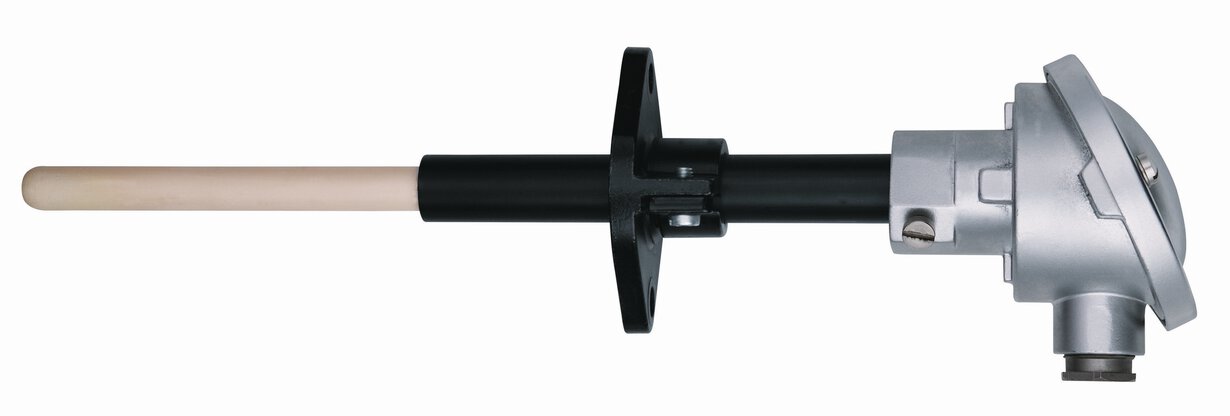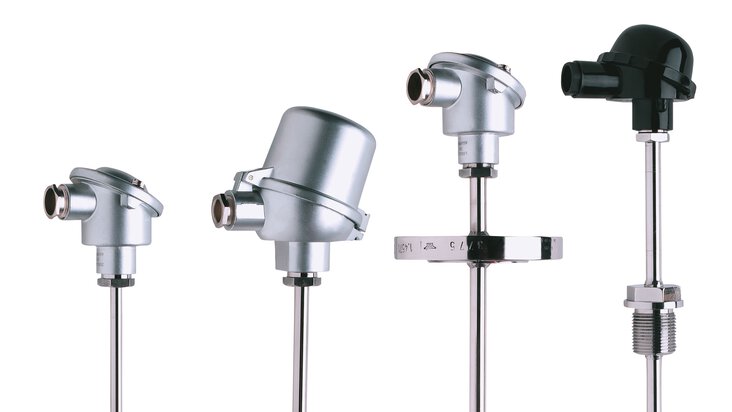

Ceramic sheathed thermocouple - properties, advantages and application examples
To ensure the accuracy and reliability of measurements, it is essential that the thermocouple is adequately protected from mechanical and chemical influences. One popular protection solution is ceramic sheaths, which offer many advantages. In the following article, we discuss the properties and applications of ceramic sheath thermocouples and share practical tips for their use and maintenance. Check it out!
Influence of mechanical and chemical factors on the accuracy of temperature measurement using thermocouples
Factors chemical factors such as corrosion and chemical reactions, among others, and mechanical factors such as strong vibrations, impacts and stresses, among others, can lead to measurement errors. In order to minimise their impact on the accuracy of temperature measurements with thermocouples, thermal shields must be selected accordingly. Various types of protection tubes are available on the market, including ceramic, metal, quartz and graphite. The choice of thermocouple protection tube material depends on the individual characteristics of the application. In this article, we will focus on ceramic sheaths, due to their exceptional resistance to high temperatures.
Properties of ceramic sheaths: temperature resistance, chemical resistance and purity
Ceramic sheathed thermocouples are an effective form of protection in temperature measurement. Ceramic sheaths not only provide high temperature resistance, but also protect thermocouples from mechanical and chemical influences. Thanks to their robustness, ceramic sheaths allow precise measurements even under extreme conditions. Compared to other types of sheaths, ceramic sheaths also stand out for their cleanliness, minimising reactions with measuring substances and ensuring a high standard of purity in the measurement process.

Ceramic sheath allows the thermocouple to be used in high temperatures and aggressive chemical environments
Importance of choosing the right ceramic sheath for specific measurement conditions
Choosing the right ceramic sheath is important for the precision and reliability of measurements under specific conditions. In the case of high temperatures, ceramic shields with high temperature resistance enable accurate measurements in extreme ranges. They are extremely effective protection in aggressive chemical environments, where chemical reactions can affect the accuracy of measurements.
It is also important to match the type and size of ceramic sheath to the specific type of thermocouple (e.g. K thermocouple) to ensure proper protection. Finally, structural factors such as the stability and mounting of the sheath must be considered to avoid vibration and deformation that could affect measurements.

The ceramic covers are resistant to high temperatures of up to 1600°C, making them the optimum choice for various types of industrial furnaces
Ceramic sheathed thermocouple - applications
Ceramic sheathed thermocouples are used in a variety of industrial sectors. These thermowells are particularly suited to high temperatures of up to 1600°C, aggressive chemical environments and where high standards of cleanliness are required. Here are some examples:
- Metallurgical industry: ceramic sheathed thermocouples are widely used in metallurgy, steel production, foundry and metal processing where extreme temperatures and the presence of harmful chemicals are present. An example of an application where ceramic sheathed thermocouples will work well is in aluminium furnaces.
- Chemical industry: In the chemical industry, where aggressive chemicals are present, ceramic sheathed thermocouples provide reliable and accurate temperature measurements in reactors, combustion chambers and other processes.
- Power industry: In thermal power plants, including boilers and furnaces, ceramic sheathed thermocouples are used to monitor temperatures in hot gases and liquids where high temperatures and pressures are present.
- Food industry: In some food industries, such as bakery and confectionery, ceramic sheathed thermocouples are used to control temperatures in ovens and other equipment.

Ceramic thermocouple covers are used, among others, in aluminium smelting furnaces in the automotive industry
Ceramic sheaths - practical tips for use and maintenance
Here are some practical tips for using ceramic sheath thermocouples:
- Mounting and stabilisation: Ensure that the ceramic sheath is properly mounted and stable to avoid vibrations and stresses that can affect the accuracy of the measurements.
- Mechanical protection: Protect thermocouples with ceramic sheaths from strong impacts, vibrations and stresses that can lead to damage. Avoid sudden temperature changes that can cause the ceramic sheath to crack.
- Cleaning: Clean the ceramic cover regularly, removing accumulated dirt, debris or residues of measuring substances. Use suitable cleaning agents that do not damage the ceramic or the thermocouple.
- Condition monitoring: Regularly check the condition of the ceramic sheath and thermocouple for damage, signs of wear or degradation. If you notice any problems, take corrective action immediately or replace the ceramic sheath.
- Regular calibration: Calibrate thermocouples with ceramic sheaths regularly to maintain their measurement accuracy. Perform calibrations according to the manufacturer's recommendations or standard calibration procedures.
- Consultation with the manufacturer: If you have any questions about the use or maintenance of ceramic sheathed thermocouples, consult the manufacturer or supplier, who can provide specific guidance and recommendations for your particular thermocouple model.
Summary: Advantages and applications of ceramic sheaths for thermocouples
Ceramic sheaths are an effective protective solution for thermocouples, offering a number of advantages and a wide range of applications in industrial furnaces, among others. Their main advantages are:
- Use in high-temperature applications up to 1000°C
- Chemical resistance
- High purity standard - does not form any reaction products with the measuring medium
- ${title}${badge}

